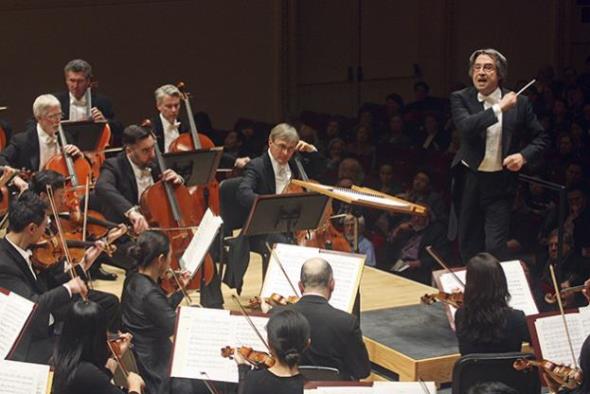CSO reports artistic, financial gains but shows little progress in restoring its recording legacy
 Report: Chicago Symphony shows record subscription renewals; brought sound of music to 460,000 in 125th anniversary season.
Report: Chicago Symphony shows record subscription renewals; brought sound of music to 460,000 in 125th anniversary season.
By Nancy Malitz
As orchestras around the country claw their way toward better health in the aftermath of the 2008 financial crisis, the Chicago Symphony Orchestra Association (CSOA) shared some upbeat news on Oct. 26 at the orchestra’s annual meeting. Helen Zell, chair of the board of trustees, and orchestra president Jeff Alexander summed up last season’s 125th anniversary celebration and the attendant community outreach activities as an extension of the love affair between the orchestra and its celebrated music director Riccardo Muti.
- Subscribers renewed at a high 90-percent rate, and ticket sales totaled nearly $22.2 million for 218 events. Record revenues were posted for the Chicago Symphony’s main series ($15.4 million) and the piano recital series ($700,000.) Single ticket sales to orchestra concerts accounted for another $6 million.
- In all the CSOA touched the lives of 460,000 people who attended performances and presentations at Symphony center and outlying venues. The association produced 263 free events such as open rehearsals, outdoor concerts and partnership programs for seniors, school children and at-risk and incarcerated youth.
- Approximately $26.1 million flowed in by way of support to the CSOA last season, including $18.1 million in gifts from individuals, $5.5 million from corporations, and $2.1 million from foundations and government agencies.
That said, the CSOA posted an operating deficit of $1.1 million on annual expenses of $73 million. The 1.5 percent deficit was relatively small, and less than the deficit of $1.3 million in 2015 and $1.4 million in 2014. But the numbers reflect the rugged reality of a tough decade for orchestras around the country generally, with extended strikes in Minneapolis and Detroit, and another now underway in Pittsburgh, where 15-percent pay cuts are threatened, along with frozen benefits and reduced orchestra size.
Chicago and other orchestras at the very top of U.S. pecking order have generally endured work stoppages of a few days days only, rather than weeks or months; this season the Philadelphia Orchestra underwent a brief strike in early October, rather like the Chicago Symphony’s two-day cessation of activities in 2012.
But the semblance of stability belies the effort it has taken for orchestras nationwide to restore bruised endowments while meeting pension obligations and attempting to get a grip on the brutal upside-down recording business. Recording used to be a source of steady income. Now it is digital quicksand.
It was the CSO Members’ Committee Report, given by longtime bassist Stephen Lester, that reflected the musicians’ frustration over the CSO’s lack of recorded documentation for what has clearly been one of its all-time greatest eras under Muti. Audio recordings are not being released in large numbers, although they are at least being made in the sense that the audio of almost every live concert is captured digitally for use in radio broadcasts and for the archives.
But audio is yesterday’s technology. This is a visual world. The CSO has nothing like the extensive live streaming video broadcasts over the internet that reflect today’s state of the art, and which characterize the current seasons of the Berlin Philharmonic as an example. That is a challenge the CSOA has yet to grapple with in any meaningful way.

